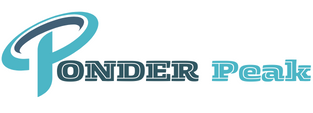North West leak detection in pipelines, sewer systems, and plumbing networks can be challenging, especially when the damage is hidden underground or behind walls. CCTV inspection has become a standard tool for accurately identifying leaks, blockages, and structural issues by providing direct visual confirmation.
What Is CCTV Pipe Inspection?
CCTV (Closed-Circuit Television) inspection uses specialized cameras mounted on robotic crawlers, push-rods, or flexible cables to navigate inside pipes and drains. These cameras transmit live video to a monitor, allowing technicians to observe the internal condition of the pipeline in real time. High-resolution imaging and lighting ensure even small cracks, leaks, or corrosion are visible.
How CCTV Inspection Works
- Camera Insertion: The camera system is inserted into the pipe through an access point, cleanout, or manhole.
- Navigation: Depending on the pipe size and layout, cameras may be pushed manually or maneuvered using motorized crawlers.
- Real-Time Monitoring: Technicians monitor the video feed, looking for signs of leaks, cracks, joint displacement, corrosion, or intrusion from roots.
- Recording and Analysis: Footage is recorded for documentation, reporting, and planning repairs. Advanced systems may include pan-and-tilt features, laser measurement tools, or sonar mapping for precise assessment.
- Repair Planning: Based on the visual evidence, technicians can determine the location, severity, and type of repair required.
Advantages of CCTV Inspection
- Direct Visualization: Provides clear, irrefutable evidence of leaks, cracks, or blockages.
- Non-Destructive: No excavation or dismantling is required unless a repair is necessary.
- Accurate Localization: Pinpoints the exact location of leaks or damage, reducing repair time and cost.
- Comprehensive Assessment: Evaluates pipe condition, joint integrity, and sediment or root intrusion.
- Documentation: Recorded footage supports maintenance records, insurance claims, or regulatory compliance.
Applications Across Industries
- Municipal Sewer Systems: Detect blockages, leaks, or structural damage in wastewater pipelines.
- Industrial Pipelines: Monitor chemical, water, or process pipelines for corrosion, leaks, or mechanical damage.
- Residential Plumbing: Identify leaks behind walls, under floors, or in buried service lines.
- Commercial Buildings: Inspect drainage, HVAC, and plumbing networks to prevent water damage and system failures.
- Construction Projects: Verify new pipeline installations for defects or alignment issues before commissioning.
Best Practices for Effective CCTV Inspection
- Pre-Cleaning: Pipes should be cleaned to remove debris or sediment for clear visibility.
- Lighting and Camera Quality: High-resolution cameras with proper lighting improve detection of small leaks or cracks.
- Skilled Operators: Experienced technicians can accurately interpret signs of leaks, corrosion, or structural compromise.
- Integration with Other Methods: Combining CCTV inspection with ultrasonic sensors, pressure testing, or dye tracing enhances leak detection accuracy.
- Documentation: Properly cataloging footage helps track recurring issues and supports preventive maintenance.
Limitations
- Access Requirements: Requires an entry point of adequate size, which may be challenging in some installations.
- Pipe Diameter Constraints: Extremely small or highly irregular pipes may limit camera maneuverability.
- Obstructions: Debris, sediment, or roots can block the camera or obscure the view.
Conclusion
CCTV inspection offers a reliable, non-invasive method for visually confirming leaks and assessing pipe integrity. By providing direct evidence, it allows operators to locate leaks precisely, plan targeted repairs, and prevent further damage.
In modern leak detection, CCTV inspection is an indispensable tool that combines accuracy, efficiency, and safety, ensuring pipelines, drains, and plumbing systems are monitored effectively and maintained proactively.


